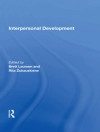Learning: A Behavioral, Cognitive, and Evolutionary Synthesis provides an integrated account of the psychological processes involved in learning and conditioning and their influence on human behavior. With a skillful blend of behavioral, cognitive, and evolutionary themes, the text explores various types of learning as adaptive specialization that evolved through natural selection. Robust pedagogy and relevant examples bring concepts to life in this unique and accessible approach to the field.
Spis treści
Chapter 1: Where Learning Fits Into the Big Picture
What Is Knowledge?
How Can We Study Something We Cannot See?
Defining Various Kinds of Learning by Procedures and Phenomena
The Evolution of Learning
Learning Is an Adaptive Specialization
Learning Is Part of an Integrated System of Psychological Processes
Part I: Learning to Predict Important Events
Chapter 2: The Procedure and Phenomena We Call Pavlovian Conditioning
Procedures, Phenomena, and Processes
Why We Call It Pavlovian Conditioning
Conditioned Emotional Responses
Conditioned Drug Reactions
Conditioned Food Aversions
Sign-Tracking (Autoshaping)
Chapter 3: Pavlovian Conditioning Is an Inference Task
The Elements of Causal Inference
The Effects of CS-US Consistency in Pavlovian Conditioning
The Effects of Temporal and Spatial Contiguity on Pavlovian Conditioning
The Effects of Temporal Precedence on Pavlovian Conditioning
Chapter 4: Identifying the Predictors of Significant Events
The Salience of Stimuli
Salience and Prior Experience With Potential Conditioned Stimuli
Relative Validity in Pavlovian Conditioning
Surprise and Pavlovian Conditioning
A Mathematical Model of Pavlovian Conditioning Based on Both Salience and Surprise
Overshadowing, Relative Validty, and Blocking: Learning About the Other Stimulus
Chapter 5: The Representations of Knowledge in Pavlovian Conditioning
CS-US Associations: The Representation of Relationships in Pavlovian Conditioning
Transitive Inference and the Linking of Associations in Second-Order Conditioning
Conditioned Inhibition: Learning to Predict the Absence of the Unconditioned Stimulus
The Role of the Environmental Context in Pavlovian Conditioning
Representing the Temporal Relationships Between Events
Extinction Revisited
Chapter 6: From Knowledge to Behavior: The Forms and Functions of Conditioned Responses
Conditioned Responses: Deciding What to Measure
The Relationship Between Conditioned and Unconditioned Responses
Behavior Systems and Pavlovian Conditioning
The Functions of Pavlovian Conditioned Responses
Pavlovian Conditioning as an Adaptive Specialization
Part II: Learning About the Consequences of One’s Behavior
Chapter 7: The Procedures and Phenomena We Call Operant Conditioning
Procedures, Phenomena, and Processes
B. F. Skinner and Operant Conditioning
The Various Events That Can Serve as Reinforcers
The Various Events That Can Serve as Reinforcers
The Four Varieties of Operant Conditioning
Behavior Modification
The Differences Between Pavlovian Conditioning and Operant Conditioning
Chapter 8: How Individuals Adjust Their Behavior to Meet the Demands of the Situation
Operant Conditioning From Two Different Perspectives
The Functions of Reinforcers in Operant Conditioning
Adaptive Behavior by Hill-Climbing
Identifying the Operant in Operant Conditioning
Chapter 9: Adjusting to Schedules of Partial Reinforcement
Classifying Schedules of Reinforcement
Ratio Schedules
Interval Schedules
Explaining the Differences in Performance on Ratio and Interval Schedules of Reinforcement
The Effects of Prior Experience on How Individuals Adjust to Schedules of Reinforcement
Behavioral Persistence
Chapter 10: Life Is About Making Choices
Choice and the Empirical Matching Law
The Generalized Theoretical Matching Law
Why Matching Occurs
The Significance of the Matching Laws
Chapter 11: Inference and the Representations of Knowledge in Operant Conditioning
Operant Conditioning Is Also an Inference Task
The Representations of Knowledge in Operant Conditioning
The Role of the Stimulus in Operant Conditioning
Operant Behavior as Procedural Knowledge
Extinction Revisited
Chapter 12: The Similarities Between Operant Conditioning and Natural Selection
Sources of Behavioral Variation
The Mechanism of Selection in Operant Conditioning
Operant Conditioning as an Adaptive Specialization
Part III: The Social Transmission of Knowledge
Chapter 13: Social Learning
Learning Food Preferences From Others
Learning What to Fear Through Observational Conditioning
Learning What to Do by Observing Others
Transmission of Information About What to Do Through Directed Instruction
The Effects of Verbal Instructions on Human Behavior
O autorze
Steve Reilly obtained his D.Phil. from the University of York, England, for research concerning the neural basis of learning and memory. He has held positions in England, Canada and the United States, and is now in the Department of Psychology at the University of Illinois at Chicago. His research focuses on the neural mechanisms and functional neuroanatomy of conditioned taste aversion learning and incentive learning. Dr. Reilly is the editor of two books (Conditioned Taste Aversion: Behavioral and Neural Processes and Associative Learning and Conditioning Theory: Human and Non-Human Applications) and is currently on the editorial boards of the International Journal of Comparative Psychology and Behavioral Neuroscience.












